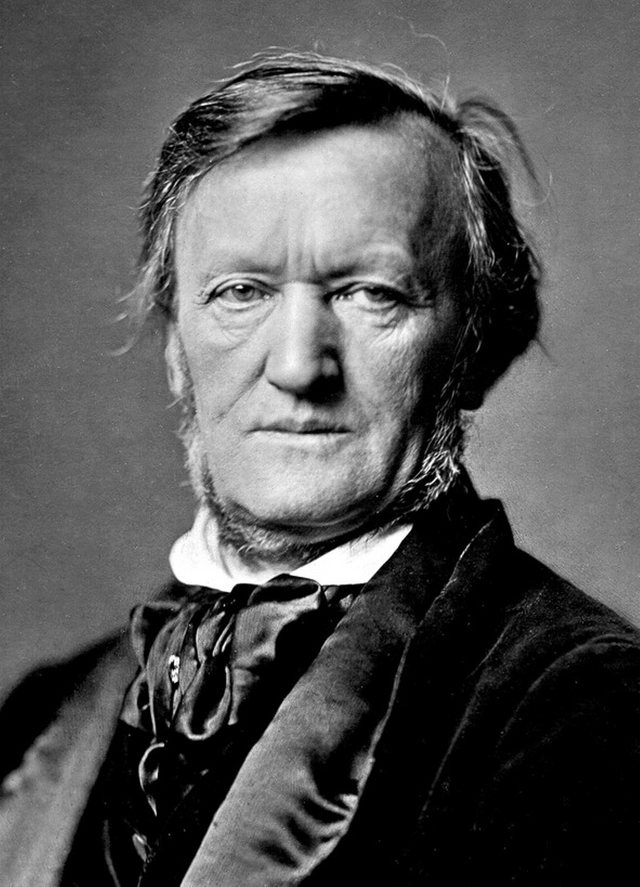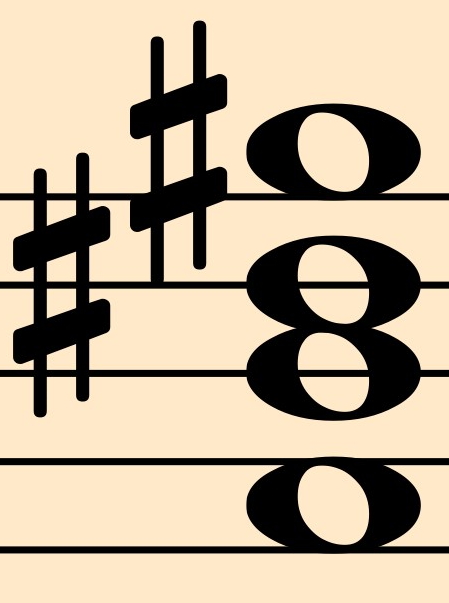The Chord that Stunned the World
I taught a class today about some features and characteristics of music during the romantic period (Beethoven, Tchaikovsky yadda yadda), and I lit up with excitement when I realized it was time to teach...
The Tristan Chord
Don't worry, you can get to listen to it at the bottom of this post, but you better read first! Otherwise, you won't 'get it' in the deep way I do.
Now, this chord has been talked about to death - indeed that's what makes it so famous, but I thought I'd bring it to Steem. Imagine a single musical chord that has unleashed endless books, research, debates, inspired composers for decades to come and shaped the way music was written in the future.
Wowzers. What kind of magical chord is this?
Well, I'm not going to go into deep analyses as many do, but in short, it's not actually the chords itself that's particularly special. It's the way it was used by Richard Wagner.

Wagner was a man famous for his grandest of the grand operas, one of which goes on for over 5 hours (depending on performance). His use of innovative harmonies 'challenged the idea of tonality'.
This was a pretty big deal. Up until now, Music had gone from absolute strict adherence to religious doctrine, to secular freedom but... sticking to traditional values and rules defined by Bach. Then Beethoven came along with his lame-ass ears and started blowing his trumpet (literally; the brass valves were invented, allowing for more common usage of horns, requiring bigger, louder orchestras to keep the balance), but still sticking to what we would consider 'conventional harmony'.
By this I mean, your ears are rarely tricked, with the exception of perhaps extending pieces to as much as 6 movements, some deceptive cadences here and there, but nothing that challenged what we knew and understood. When this happens (such as in Beethoven's 'Eroica'), we typically define things as a new musical era.
This was not the case with Wagner's attack on norms, but it was just as profound, if not more so than any effect Eroica had on the music scene.
I suppose the reason was that we pretty much just had a big shift, and the Romantic period was, after all, a time of huge liberal experimentation, a rejection of things that were, but also a commentary on things that had once been.
Anyway, the point is that his extension of harmony was key here.
The Tristan chord came right at the beginning of his 4.5-hour opera, 'Tristan und Isolde', a story about a prince who took a princess from Ireland to the UK against her will to marry his King Uncle, using love potion to fall for each other in various complex means, then everyone dying in tragedy.
There, I saved you 4.5 hours.
The chord comes in, fairly conventionally, built from F, B, D♯, and G♯ in that order going up (initially). Also known as a F half-diminished 7th chord:

Ok, so what?
Well, Wagner would essentially place this chord where you would normally, through the entire history of music, expect a resolution of some kind. Resolutions are very important in music, they not only give you information of what key signature you're in, but they give you a sense of rest.
When listening to Ode to Joy, for example, You know when the song has ended in the same way you know when this sentence has finished. If I was to end this sentence in a question mark, you would feel somewhat uncomfortable?
The same thing applies in this music; an un-asked question, a half parenthesis (something which I can't stand. It plays with one's expectations of how the musical phrase SHOULD end, then rips it up in your face and takes a big fat dump on it.
For an easier perspective, listen to the first two notes and imagine where you might expect the music to go next. To me, it comes across a little like slow-Jurassic Park:
Interesting contrast, eh? Well, that's all very good, but even this is not what made the chord so shatteringly notorious.
Remember, the opera is over 4 hours long.
The story, a tragic tale, is full of unrest and discomfort, tragedy and suffering. I guess in Wagner's head, he was thinking... why would such a story 'resolve' to a place of rest when all this turmoil is going on?
So rather than replacing the resolution, in the beginning, he decided to cut out all resolutions, across the entire piece... And instead, using this chord of unrest and instability... for four hours.
Can you imagine listening to a Californian speaking to you with that infuriating upward inflection for four hours? That must have been how it felt for those who listened to the Opera's premiere.
What finally makes this chord so phenomenal, is when, finally...
Finally...!
The opera, after an eternity of discomfort, lands on a resolution, a home chord, right about when everybody is dead, and you're soon met with the most relieved applause you'll ever experience (presumably).
So, without further ado, now you hopefully 'get it', I present an extremely short excerpt, starting right at the beginning where the Tristan chord begins, and skipping right to the end where hopefully you can feel how purely unrelenting the music is, refusing to rest. If you can pick up on it, you may shed a tear when the release finally happens!
If you want, for some reason, to listen and watch the entire thing, you can here.
So there you have it
The Tristan chord. Alone, it ain't all that much. But with Wagner playing around with it, he plays with your psyche and changed the way composers saw the world from that point forward.
I'm kinda jealous.
But the end of all things has drawn near. Therefore be sober-minded and be sober unto prayers.(1 Peter 4:7)
Question from the Bible, Does the Bible show any solutions on the current problems of mankind? [Part 1 of 2]
Watch the Video below to know the Answer...
(Sorry for sending this comment. We are not looking for our self profit, our intentions is to preach the words of God in any means possible.)
Comment what you understand of our Youtube Video to receive our full votes. We have 30,000 #SteemPower. It's our little way to Thank you, our beloved friend.
Check our Discord Chat
Join our Official Community: https://steemit.com/created/hive-182074
🏆 Hi @mobbs! You have received 0.05 STEEM reward for this post from the following subscribers: @tyrnannoght
Subscribe and increase the reward for @mobbs :) | For investors.
As soon as you compared to a question mark it made sense! I never knew what i was missing with chords :D
It feels so weird, I know?
haha?
It feels less weird these days - hive is down atm :o
Excuse me if I make a stupid mistake there, but isn't this just a minor 7 chord? At least in German a "Halbverminderter" (pretty much directly translates to half-diminished) would be G# B D F and not G# B D# F.
I'm not entirely sure and probably there's a small mistake in my thinking. I'd be glad if you corrected me.
Greetings
Not exactly. It seems I voiced it inconsistently, though.
A G# minor 7th in this example would be G#, B, D#, F# - but since the F is natural, it doesn't fit in this definition. It would be an altered minor 7th (up to you how you name it depending on voicing)
You could call it some kind of G#6 chord; Ab min 6 would be A♭ C♭ E♭ F, which is enharmonically equivalent.
The actual error here is calling it G#, as opposed to F. I'm not sure why I made that error is given that the precise voicing is clearly written (in my own picture I created, no less!) as F, B, D#, G# - a half-diminished 7.
I suspect its because I was reading about the many interpretations of the chord by scholars, each of which make decisions based on which of the four notes is the root. I read some simply argued the G# was a very slow passing tone, rather than part of the chord and... well, it goes on.
The point is, the chord is interesting! I'll make an edit with this in mind either way, cheers!
Thanks for your answer!
Congratulations @mobbs! You have completed the following achievement on the Steem blockchain and have been rewarded with new badge(s) :
You can view your badges on your Steem Board and compare to others on the Steem Ranking
If you no longer want to receive notifications, reply to this comment with the word
STOPVote for @Steemitboard as a witness to get one more award and increased upvotes!
That was the most wonderful blog! I had great fun listening. You're a good teacher :)
Thanks! I do try, since it's my passion as well as my job.
... Sometimes I spend 3-4 hours on a class of 45 minutes just because I end up getting lost digging into research and such lol